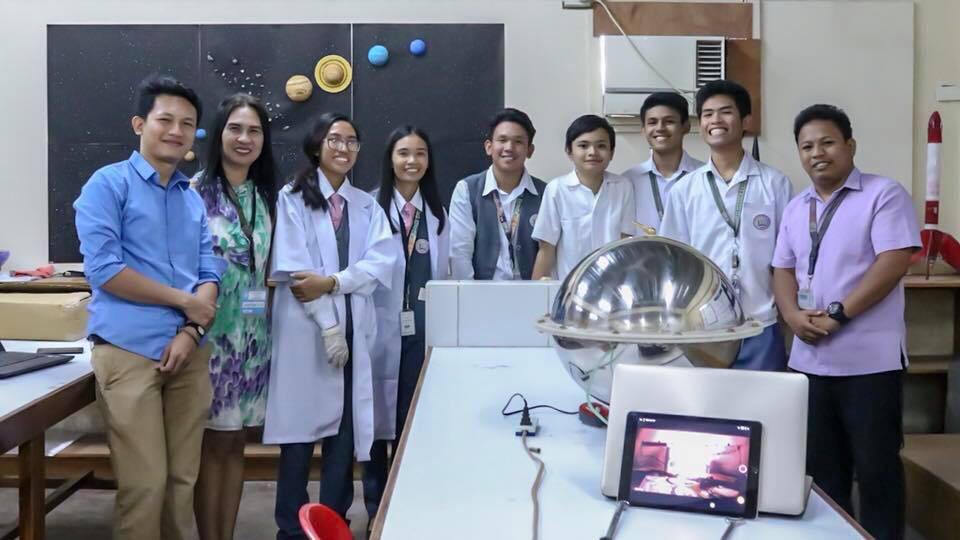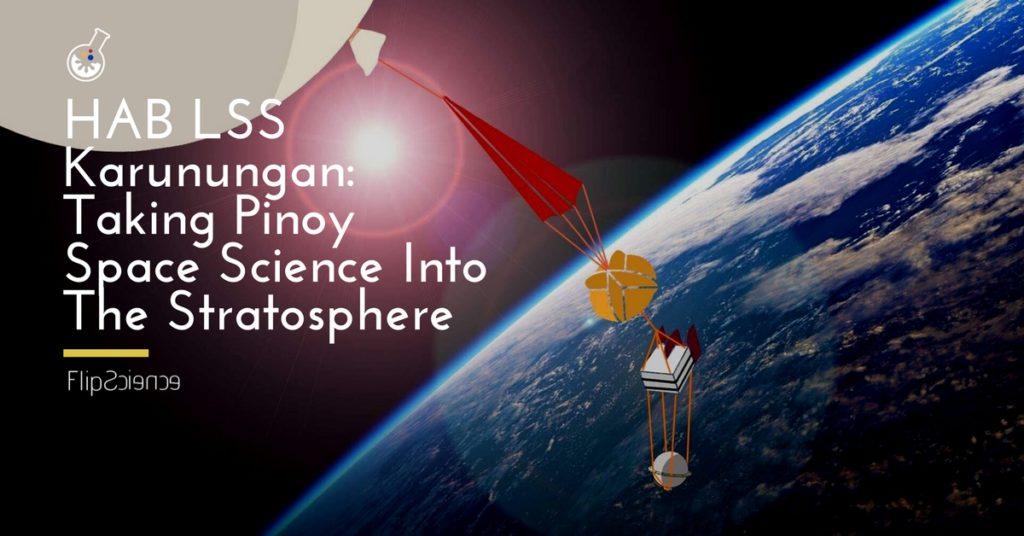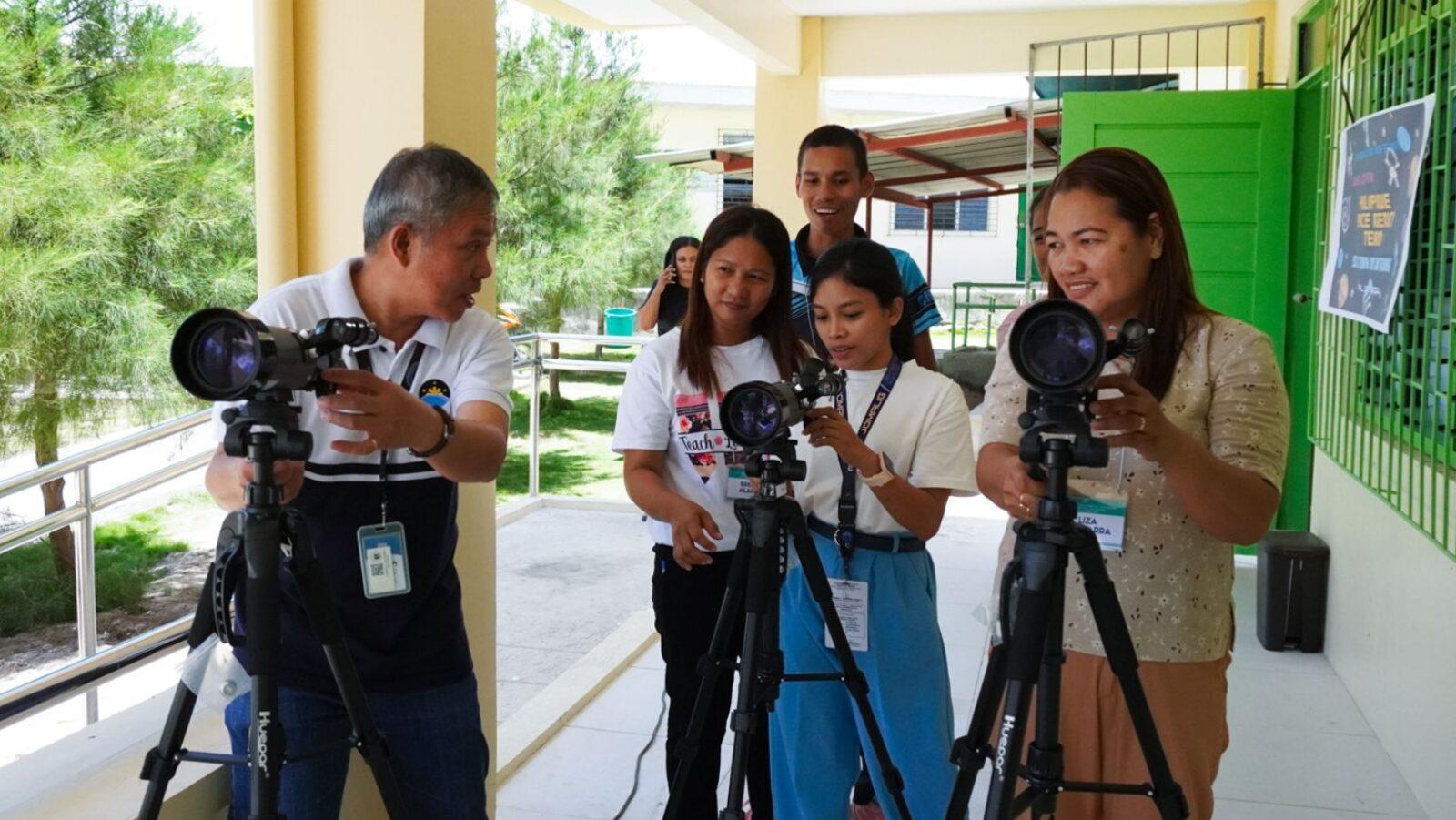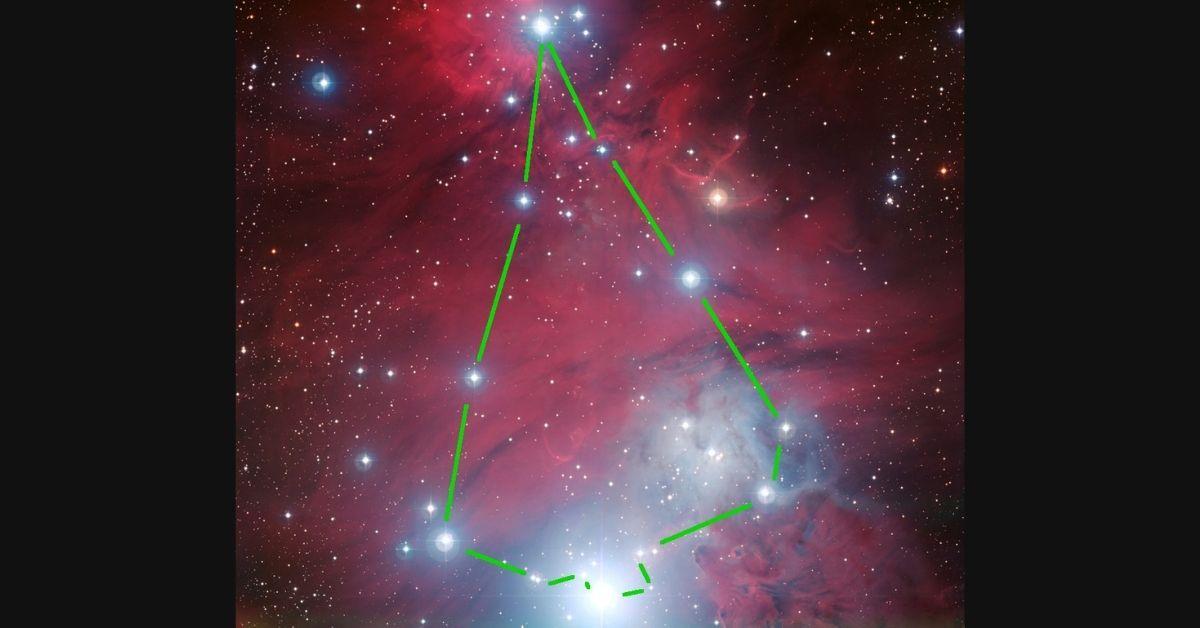Three years ago, on an unremarkable day in September, Wilfredo Pardorla Jr. sat down for a quick breather.
Pardorla took advantage of this temporary lull in his schedule as a physics teacher at St. Cecilia’s College – Cebu to watch an episode of Bang Goes the Theory, BBC’s defunct science magazine show. It was a feature celebrating U.S. Air Force pilot Joe Kittinger’s record-setting skydive in 1960 — a 4-minute, 36-second free-fall from 102,800 feet up in the sky. In commemoration of that historic event, they launched a weather balloon carrying an assortment of objects into the stratosphere.
As the camera panned towards the vast, almost pitch-black space beyond the Earth’s atmosphere, Pardorla was struck with inspiration.
Though now a staple for meteorologists and researchers worldwide, high-altitude ballooning remains a relatively nascent practice in the Philippines. A few seconds of Googling showed Pardorla various reports of students across the world making their own high-altitude balloons. Two Canadian high schoolers even sent a LEGO man into space, literally taking creativity to a whole new level.
By then, Pardorla had seen enough. In his mind, an idea began to take flight. What if our own students could work on something like this?
Convinced that his brainchild was full of more than just hot air, Pardorla shared it with his colleagues. Soon enough, Christopher Caballa Jr., a biology teacher, was on board with the idea. Support from the school and the formation of a weather balloon flight team took his proposal to new heights.
Months later, the project evolved further, despite a momentary setback. An early attempt at launching a high-altitude balloon carrying mice and crickets ended tragically. The balloon’s 3-centimeter-thick, polystyrene-expanded walls and duct tape insulation proved to be insufficient in protecting its tiny passengers. From merely building a basic high-altitude balloon, the team moved towards developing a life support system to go with it. To their knowledge, this has yet to be done in the Philippines.
At that point, Pardorla and his team knew that what they had was no longer just a simple experiment. It had become a mission.

Space for improvement
“The Philippines is still in its infancy, in terms of space development and space-related projects,” shared Christian Lawrence Cantos, Avionics Lead for the High-Altitude Balloon Life Support System (HAB LSS) Karunungan Flight Team. As a result, high-altitude ballooning remains a rarity in the country. In fact, it is only by the Philippine Atmospheric, Geophysical and Astronomical Services Administration (PAG-ASA) for weather research and monitoring.
Cantos and five other students — Rhenz Jay Estrera, John Rollene Pastor, Jhy Rosheene Paunel, Justine Nid Daffon, and Enrique Pacudan — comprise the team. Pardorla and Caballa serve as their mentors. The team is officially recognized by the Department of Science and Technology’s Philippine Council for Industry, Energy, and Emerging Technology Research and Development (DOST-PCIEERD) as one of its Young Innovators Program (YIP) grantees.
The high-altitude balloon’s life support system holds five to seven house mice (Mus muculus) in a sturdy enclosure. Pacudan, the team’s Design Lead created the highly reinforced holding area. Meanwhile, Cantos spearheaded the programming and assembly of the Arduino-based payloads.
Once completed, the team will launch HAB LSS Karunungan from its Stratospheric Balloon Platform above the Armstrong limit. Also known as Armstrong’s line, it is located 18-19 km (59,000-62,000 ft) above sea level. The high-altitude balloon and its passengers will stay in flight for approximately 3 to 4 hours. During that stretch of time, they will endure severely low temperatures and extremely low pressure. These harsh conditions reach levels beyond what normal, unprotected human beings can survive.
The Karunungan project draws inspiration from numerous foreign space science projects. Some examples are the Animal Enclosure Model (AEM-X) of the National Aeronautics and Space Administration (NASA) and the Balloon Facility of the Tata Institute of Fundamental Research (TIFR).
A rough but worthwhile flight
Daffon, the team’s Young Mission Director, cited the lengthy process of securing permits from the necessary agencies — the Civil Aviation Authority of the Philippines (CAAP), the Institutional Animal Care and Use Committee (IACUC), the Bureau of Animal Industry (BAI) and the National Telecommunications Commission (NTC) — as one of the team’s major challenges, not just in sticking to their schedule, but also in working with the limited budget they had on hand.
Despite sticking to the most cost-effective materials possible, the team still found itself short on funds on numerous occasions. “Space technology isn’t cheap,” explained Paunel, the team’s Young Mission Specialist. In addition, meeting their school requirements and working on Karunungan — which involved completion deadlines and tests that were extremely time-demanding — also proved to be quite a balancing act. “At times, we would get little or no sleep finding solutions all night, revising papers while answering homework,” Paunel said.
Fortunately for the team, support from DOST-PCIEERD was steady and consistent. “It has been a stereotype that if a brilliant Filipino has an innovation, he cannot flourish due to lack of support by the government,” shared Pardorla. “Through DOST-PCIEERD’s Young Innovators Program (YIP) and their various programs supporting Filipino scientists, I could say that those days are gone.”
“With PCIEERD supporting our project, we learned that the government is encouraging its people to do work that would benefit the whole country,” revealed Pastor, the team’s Weather Lead. “[PCIEERD] didn’t just give us support in doing this project; they gave us the inspiration to do and discover things beyond our limits.”

To infinity and beyond
Estrera, the team’s Recovery Lead, has high hopes for the project: “[Project Karunungan] will be one of the Philippines’ stepping stones in achieving the first manned space flight.”
Upon the successful completion of the project, the team plans to publish their study and take their findings further. “Since our research is about bringing live animals to space and creating a life support system to keep those organisms alive, the gathered data from the mice will be quantified for future manned space flights,” Daffon stated.
“We hope that when someone has that “eureka” moment or a brilliant idea, they would not be afraid to execute it, no matter how ridiculous it sounds to other people, because most of the world’s discoveries came from the most ridiculous ideas,” mused Paunel. “We encourage those young researchers to contribute to the country, especially in the fields of science and technology, because that is what our country greatly needs right now: a good foundation in terms of research.”
If anything, the Karunungan team’s journey proves that the right push is all an idea really needs to soar — even one attached to a high-altitude balloon.
The HAB LSS Karunungan has two launches scheduled: May 8, 2018 and May 12, 2018. You may check the official Facebook event page for more information.
Author: Mikael Angelo Francisco
Bitten by the science writing bug, Mikael has years of writing and editorial experience under his belt. As the editor-in-chief of FlipScience, Mikael has sworn to help make science more fun and interesting for geeky readers and casual audiences alike.







